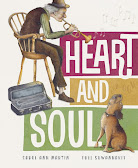We all know what a difficult year it has been for those who work in the arts and CBCA Tasmania has provided a platform for our local children’s authors and illustrators to share their recent creative works via our blog. This week Nella Pickup provides an overview of a number of 2020 of publications, some still to be released. If something resonates, then ‘read local’ but also ‘buy local’ and show your support for Tasmanian book sellers as a lead up to Love Your Bookshop Day.
2020 has provided many challenges; one of those has been keeping up to date about local children’s literature creators. This is my list of 2020 releases with a Tasmanian creator.
Christina Booth Are these Hen’s eggs? (Allen & Unwin) is a multi-layered story about an egg hunt and about friendship, co-operation and celebration of difference. Christina’s 2020 collection includes a paperback release of her Anzac Tree; illustrations for Maureen Jipiyiliya Nampijinpa O’Keefe’ s Mum’s Elephant (Magabala Books) and illustrations for Sally Odgers (see below).
Jennifer Cossins’s The Mummy Animal Book (Hachette) and The Daddy Animal Book (Hachette) are available now and The Ultimate Animal Alphabet Book (a companion to The Ultimate Animal Counting Book) will be out late October. As usual. her books are filled with fascinating facts and beautiful naturalistic illustrations.
Phillip Gwynne and Tony Flower's Small Town (Puffin) is based on a real-life story of Pyramid Hill in regional Victoria. Tony Flowers has used watercolours, coloured pencils and ink to bring warmth to this happy refugee story. Make sure you read the endpapers.
Kate Gordon’s Juno Jones series continues with Juno Jones Book Sleuth (Yellow Brick Road) in October. The Heartsong of Wonder Quinn (UQP) which will be released in September is already receiving great reviews. Magpies 35(3) p38 compares it to A. F. Harrold’s The Imaginary and the Afterwards; and you can follow up on Margot Lindgren’s comments on the Momo blog.
Julie Hunt’s Shoestring: The boy who walks on air Allen & Unwin is a companion to the award winning KidGlovz. Read Julie’s recent blog post.
Carol Ann Martin and Tull Suwannakit’s picture book Heart and Soul (Scholastic) is a touching story about Charlie, a musician, and his dog Louis who are separated by illness and then reunited. A cross generational story that is perfect for these uncertain times.
Sally Odgers recently wrote about Aussie Kids: Meet Dooley on the Farm Penguin, illustrated by Christina Boot. This book hits the shelves in a few days.
In a recent blog, Lian Tanner wrote about her transition from fantasy to a much more varied repertoire. A Clue for Clara (Allen & Unwin) is a delightfully funny mystery that also deals with bullying, death of a parent, and the struggles of rural policeman dealing with stock thefts.
If I missed anyone, please let us know by posting a comment here so we spread the word!
Nella Pickup
Grandmother and retired librarian


















